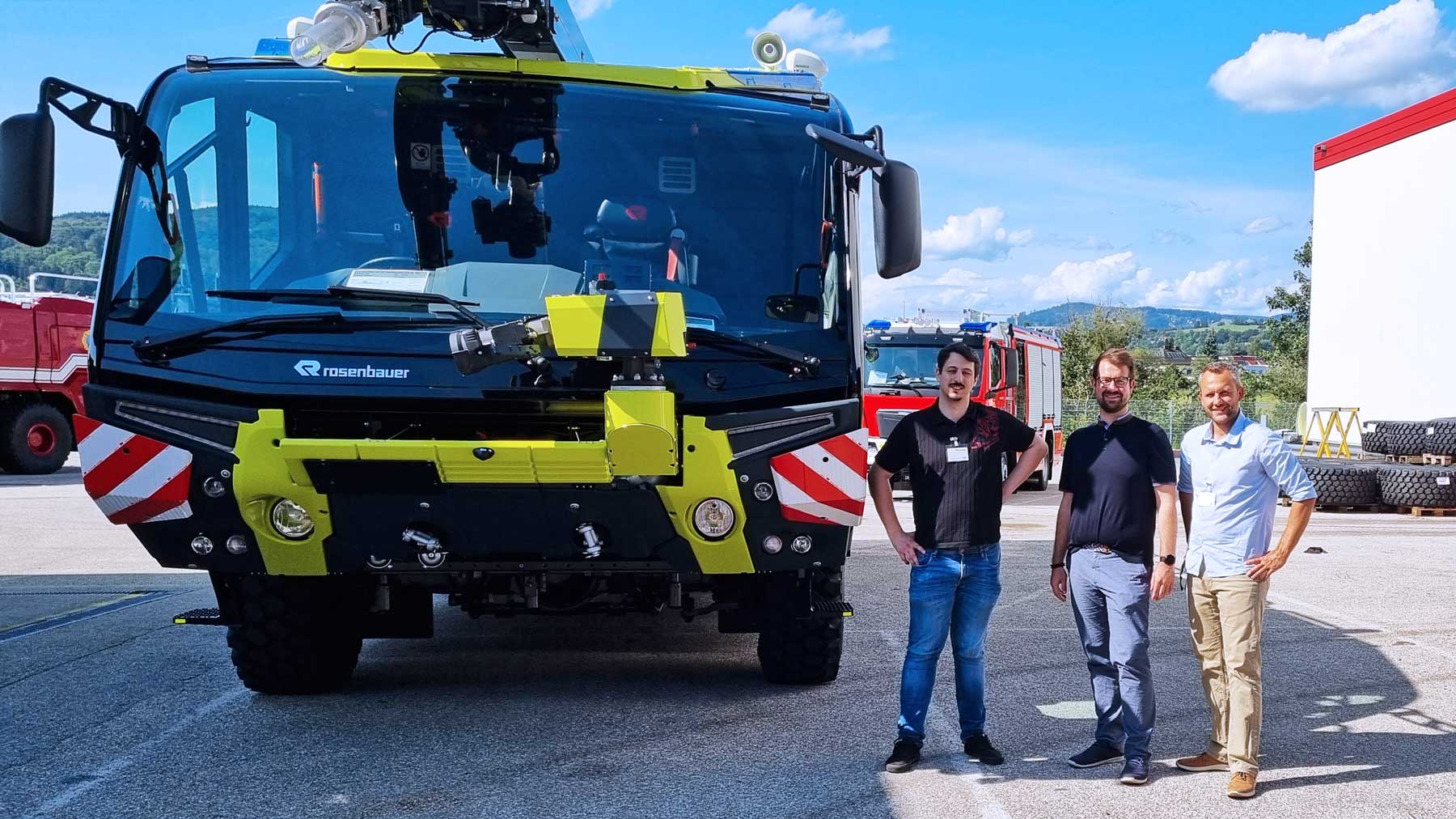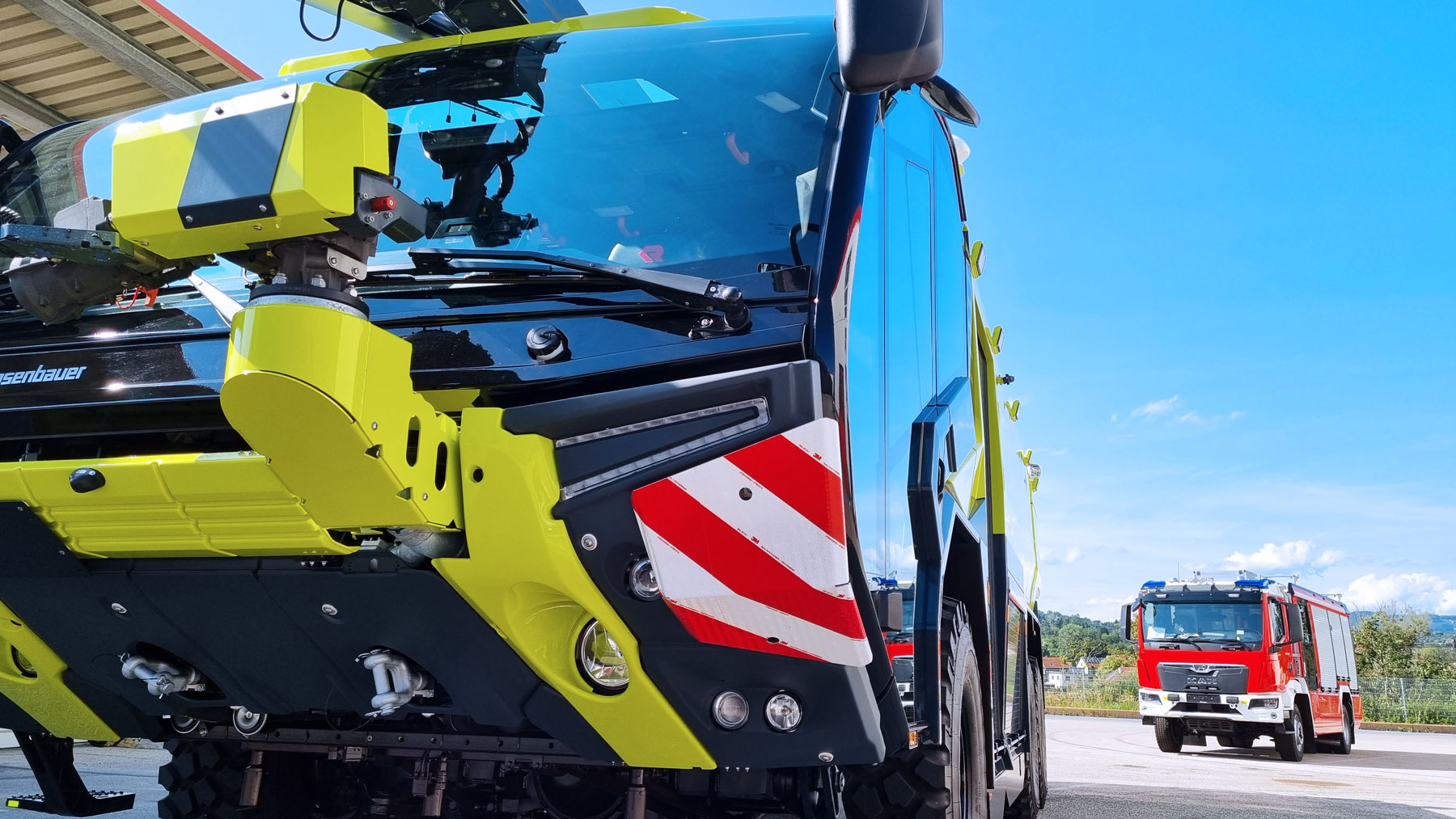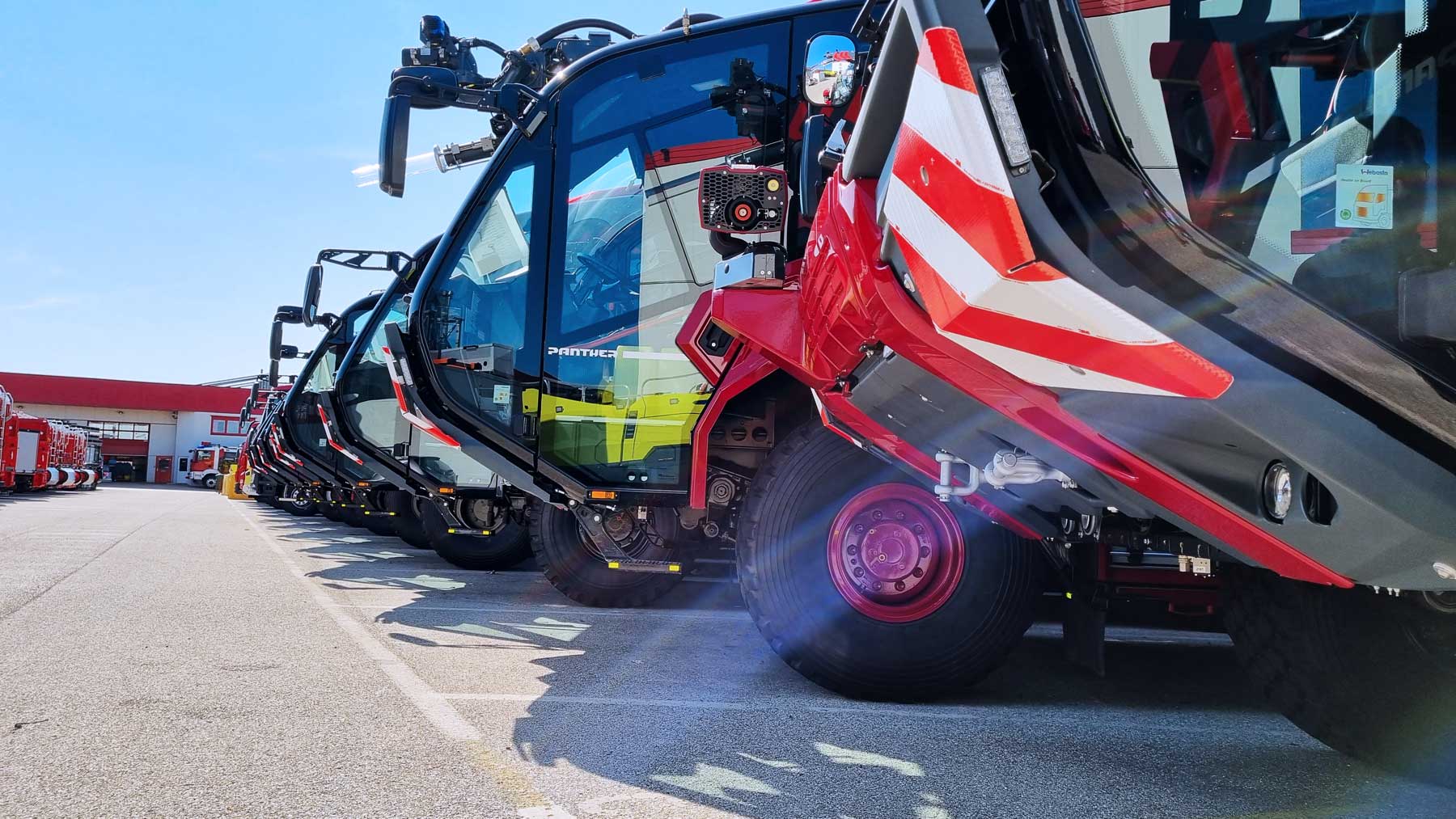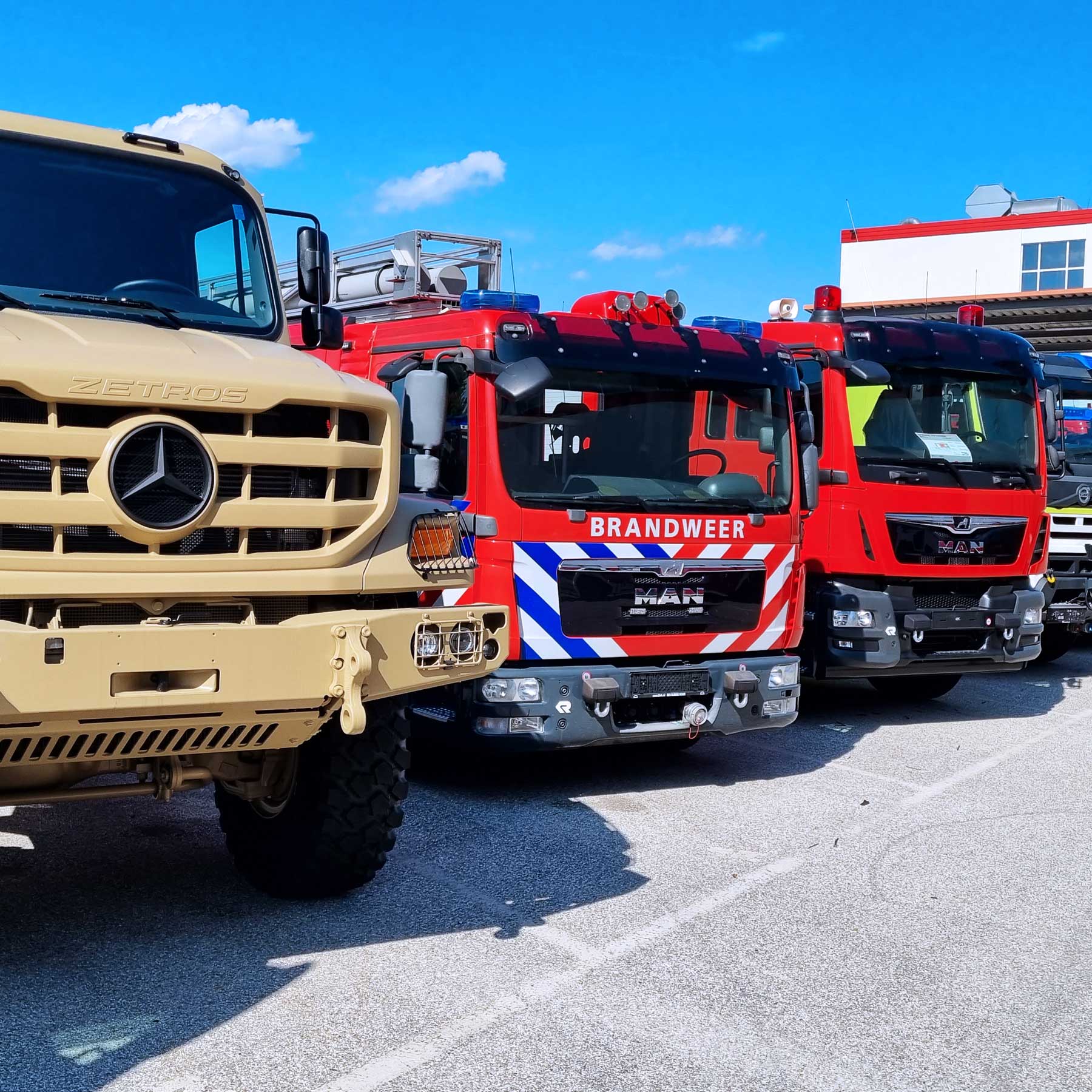The IT world is full of buzzwords. Digitalization, Internet of Things, Cloud Native, Artificial Intelligence – all these concepts are already part of our lives, but for your average human they remain at the very least hard to grasp. They sound abstract and create a sense of detachment.
IT companies, too, tend to have meaningless slogans, and we thought about that a lot when choosing ours. “Make a digital difference” is the motto we chose to live by, but there’s little to no difference to be made if our work doesn’t put a dent in society.
The solution? Working with inspired people that allow us to bridge the gap between buzzword and real-life impact: Rosenbauer is one of those, and in this article, we unpacked the company’s vision and mission thanks to an interview with its Head of Digital Solutions, Florian Haslehner.

156 years of commitment to adaptability
At the time of Rosenbauer’s foundation, the world didn’t know what a World War was. The Wright brothers had yet to make their first flight, and Carl Benz was twenty years away from patenting the first car – it was 1866.
Involved in fire services since the beginning, they saw the real turning point happen in the 1920s: the fire trucks came. Today, a century later, those same trucks evolved from rudimental yet innovative vehicles for first responders to today’s complex motorized beasts: among them, the CFT – the firetruck of the future.
But what makes a four-wheeled vehicle from the 1920s different from an equally mechanical, bigger machine of our time? More importantly, how does a company with this legacy propel even the most modern fire truck further into the future?
To give more in-depth context to the answer to this question, we asked Mr. Haslehner how a company with Rosenbauer’s history stays ahead of the curve.
Deep in our DNA we have customer-centricity baked in. This is the perfect foundation for an agile and modern product management and development. On the other hand, we tend to be too customer-focused sometimes which is not always helping with innovation and driving mayor changes. I think if we get the transformation into an agile tech company right and keep being open minded towards new technologies we are on a good track.

Digitalization applied to firetrucks
In a world as fast-paced as ours, just building a great machine isn’t enough. Not anymore, at least. This was already proven by the recent, disruptive changes in the automotive sector, and it holds just as true in Rosenbauer’s industry.
In 2022, it is not only an understatement to say that digital solutions like IoT applied to businesses are the future both in terms of survival and profitability: it has become apparent, and there is no turning back.
For a company like Rosenbauer, data collection is an essential part of business. It drives R&D forward, and it helps to understand where and what to improve, and for which specific situations – they do so, by equipping every one of their firetrucks with 150 to 200 high-frequency sensors.
Rosenbauer is no stranger to breaking new ground or going against the common consensus of competitors: for instance, they introduced aluminum structures in their vehicles to optimize weight – everyone criticized this, yet it later became industry standard. Similarly, they do not mass-produce rescue vehicles; each one is different from the others, but this peculiarity risked becoming an obstacle, for it also makes the process of data collection quite a bit harder.
Yet this is a bold undertaking even for a company always striving to stay on top – here’s what Mr. Haslehner had to say about what is driving Rosenbauer so heavily towards a digital future:
Mainly the change process into a technology and solution provider. As a vehicle and equipment manufacturer we have a high need for digital integration and connection to support complete end-to-end solutions.
However, with over a thousand operational trucks connected to the fleet, there was apparently no way to make the process more efficient. Or was there?
The Connected Fleet Project
Imagine hundreds of different vehicles sending out simultaneous streams of data. It can be about the pump, the sensors, and more – in short, massive telemetry that takes snapshots of everything the vehicle does.
To make sense of this IoT data and use it for instances like predictive maintenance of the vehicles, all this information must be both processed and visualized. It was this type of data that Rosenbauer used to build their firetruck of the future – a vision that they materialized after analyzing data from hundreds of missions to determine features like, among many, the electric vehicle’s autonomy.
We wanted to achieve for them a level of quality close to a production system, making data easy both to process and interpret, but there were challenges. The main issues with such amounts of information are speed and reliability: to solve these issues, we attained from the experience built during our work with the European Space Agency. Before, it could take hours to inspect all the values, whereas now the process is optimized. Likewise, while before it was hard for Rosenbauer to know if there were errors in data transmission, it is now consistent.
Altogether, Cloudflight’s and Rosenbauer’s project is a seemingly titanic undertaking, which begged the question: what is the future of the Connected Fleet? Here’s what Haslehner had to say about it.
Connecting our customer’s fleet is in fact even larger than it sounds. Not only the vehicles need to be connected, but we are also integrating our Drones, technical equipment and in the future maybe even stationary fire protection and smart devices into our fleet solution. The goal is improved transparency and efficiency in the life of emergency response teams.
But one doubt still remains: how does this impact – and hopefully improve –
the work of those who put their lives at risk every day to save others?
The other side of the coin: the end customers
Airports, fire departments, and ultimately society – these are the areas supposed to feel the impact of this ongoing digitalization problem. And they do.
The Connected Fleet project, along with a platform to manage firefighting operations, is one of the steps Rosenbauer is taking towards what they acknowledge as the future of emergency management: connectivity and information at all times. Connected Fleet provides fire departments with a complete overview of their emergency response equipment – from telemetry data such as kilometers driven, engine speeds or brake pressures, to information on the levels of fuel and extinguishing agent tanks, exact position and route data, as well as the operating data of installed or mounted equipment.
To grasp the impact of these initiatives, it is important to understand that all of this was done manually, and that firefighting is a niche with a very high turnover of people. This brings up two issues:
- New people need to constantly be trained from scratch, which can lead to imprecisions and errors in the evaluation of the logs.
- The data can be imprecise, outdated, and not available within seconds – which matters – because in the face of a crisis, neither is it possible to waste minutes looking for logs, nor is it possible to check if everything is exactly as written in them.
The goal is thus to remove uncertainty and human error. This will give full and precise transparency to fleet managers and commanders, which will translate to more efficiency, more effectiveness, and ultimately to more lives saved. The data Rosenbauer collects with the Connected Fleet can be used, for example, to know in real time which truck is nearest to a critical situation: this will allow fleet managers to send that specific response team, which in turn will be able to intervene faster.
With these and other use cases, end users have the chance to optimize and fine-tune their daily operations, creating a sure-fire impact on the successful outcome of missions.
This all plays into what is, ultimately, the vision of Rosenbauer. In the words of Haslehner himself: to become the Operating System of emergency response, expanding their user pool from fire departments to pre- and post- emergency players like insurance companies, company owners, and even city mayors.

Future implications: a chance for growth
There’s never a lack of talk around how big, legacy companies tend to be slow behemoths that struggle to adapt. However, we rarely take the time to stop and look at those who go the opposite direction and decide to innovate – for Rosenbauer, going fully digital (from the Connected Fleet to potentially their bureaucracy and every other corporate process) could mean even more than improving their vehicles and empowering R&D.
Upon being asked where he sees Rosenbauer in 2030, Haslehner replied:
[In 2030] Rosenbauer is the world’s largest “solution provider” for emergency response teams. We will be producing the most innovative fire trucks and equipment and with our digital solutions we will connect the Rosenbauer portfolio and external partners to a specialized ecosystem. We are a technology company. With our focus on topics like wildfire protection, solutions for smart cities or incident management for airports and industry we offer end to end solutions to new customer groups, leveraging our position in the firefighting business.
In our interview with Florian Haslehner, it was stated that a partnership with a player like Cloudflight is part of Rosenbauer’s path towards an agile approach: instead of stubbornly (and slowly) trying to do everything in-house like many companies do, Rosenbauer seeks partnerships with cross-industry experts that have the necessary knowledge to take them one step closer into their 2030 vision.
Digitalization, in its every facet, is the way towards a remarkable ROI, especially when it comes to the potential of information. Data, in fact, can be used as building blocks to further expand a business proposition, through offering a wide array of digital services. These services have the inherent potential to reshape an entire industry and push forward new ways of facing emergencies.
After all, saving lives may not be everyone’s business, but having an impact and providing the best possible service is.
